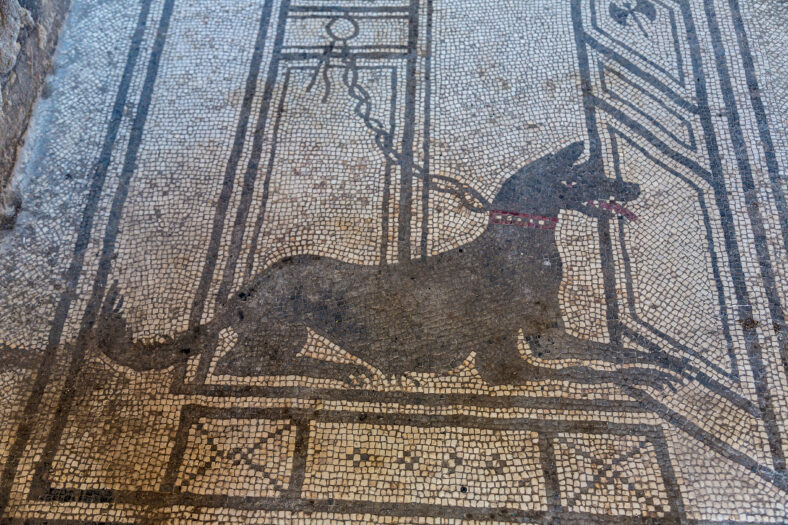Archeologists Set Out To Answer Questions About The Largest Roman Dog Sacrifice Site

The remains of at least 140 dogs in an ancient Roman quarry pit were found in 2015 at the former Animal Husbandry Center of Nescot College.
It was one of the largest collections of canine remains ever to be discovered in Roman Britain. In total, 5,436 dog bones were uncovered.
However, no one could figure out why so many dogs had been buried there. A recent study led by Dr. Ellen Greene may finally answer some questions about the site.
In 2015, archaeological excavations were conducted at England’s Nescot College in Ewell, Surrey, revealing a 13-foot oval shaft that dated back to the late first or early second century C.E.
The shaft was first used as a Roman quarry pit but was later repurposed into a deposit for objects like coins, gaming tokens, pottery, and human remains.
Researchers were able to identify three different phases of the shaft’s use. During the first two phases, large amounts of animal remains were buried at the site, while the third phase saw a steep drop in ritual deposits.
Overall, 10,747 animal bones were unearthed from the Nescot shaft, and more than half belonged to dogs. In the Roman era, dog sacrifices were not uncommon, but the huge quantity found in the pit was out of the ordinary.
The dog breeds of today did not exist in Roman times, but the Romans did have “toy dogs” and other modern-looking breeds.
Most of the dogs buried at Nescot were smaller breeds. Some bones showed signs of chondrodysplasia, a genetic condition resulting in small limbs that are disproportionate to body size.

Sign up for Chip Chick’s newsletter and get stories like this delivered to your inbox.
Dogs with this condition would have resembled the corgis of today. Other bones were similar to the modern Maltese.
The findings also showed that many dogs suffered from age-related conditions, which meant they lived long enough to grow old.
The remains were relatively free of any marks of butchery or trauma, indicating that they were not killed for food or fur.
These dogs likely were not used for labor or mistreated in any way. Instead, they were probably loved and cared for.
The site was not just a pet cemetery, though. There were human remains present alongside the dogs, suggesting that the shaft had once represented a location for ceremonies or rituals.
“The Romans had specific rules about what types, colors, and ages of animals were appropriate for sacrifice to different gods,” said Greene. “It’s likely that these dogs were chosen based on such cultural criteria.”
Dogs were associated with several deities in Roman mythology. Additionally, they were important to the people in Roman Britain, serving as hunters, herders, guardians, and companions in everyday life.
It is unclear which deity these dogs were being sacrificed to and why small dogs were chosen for the sacrifice. Experts also don’t know why the site lost its religious significance over time.
The study was published in the International Journal of Paleopathology.
More About:News